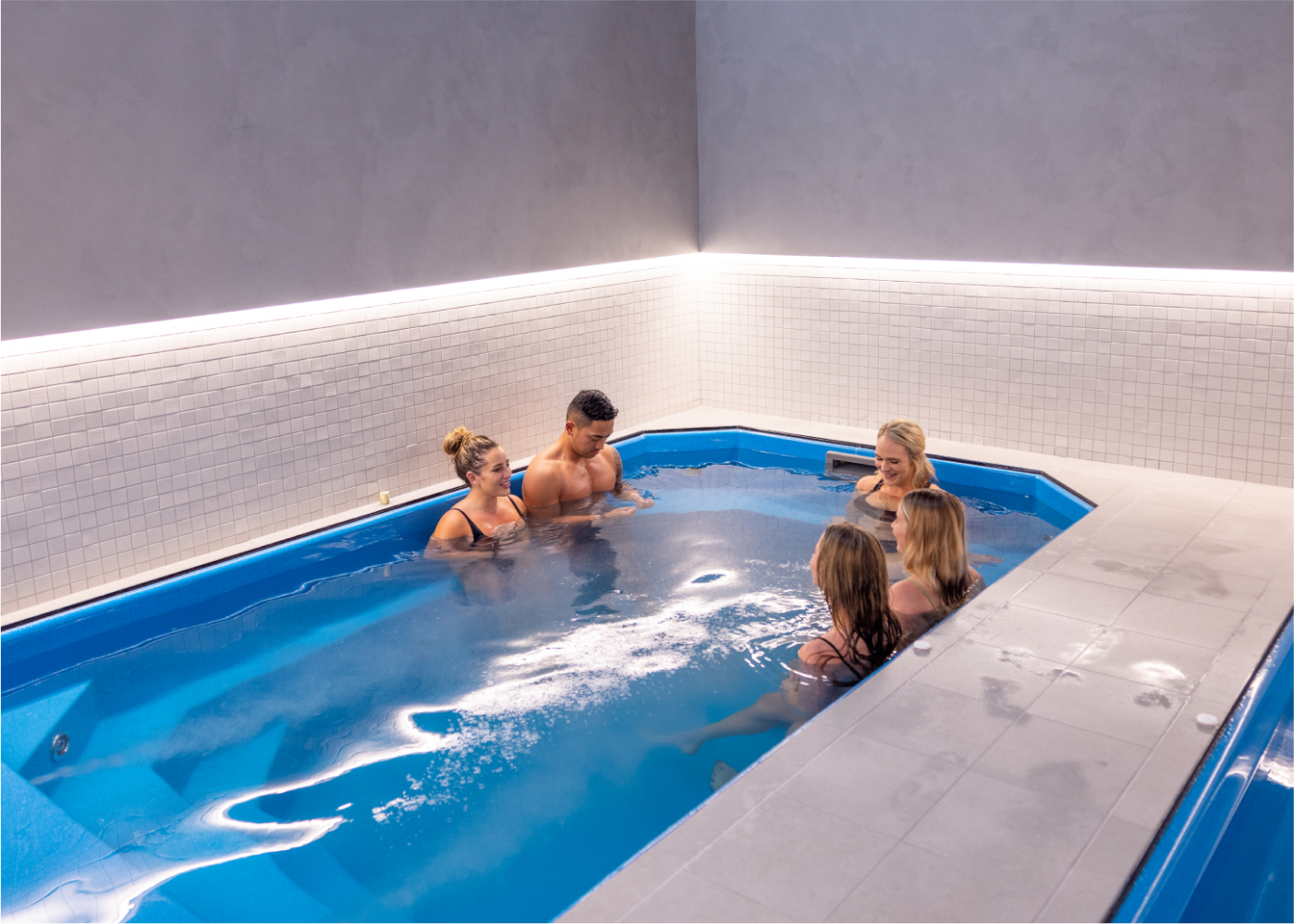While there are many different ways to go about conducting contrast therapy, they basically boil down to submerging yourself in cold water for a short amount of time and then submerging yourself in hot water for a longer amount of time.
The contrast between the two extreme temperatures is what gives the therapy its name and is also the reason it is known to offer many health benefits.
HOW DOES CONTRAST THERAPY WORK?
Contrast water therapy relies on vasoconstriction and vasodilation. During cold water immersion therapy, your body responds to the treatment by contracting your capillaries, which is what is known as vasoconstriction.
On the contrary, when your body is exposed to heat therapy, your capillaries open up and become larger, which, therefore, increases your blood flow.
These treatments are both commonly used by athletes attempting to recover from injury or muscle soreness; ice bath therapy and sauna or steam room therapy are often more well-known than contrast bath therapy.
However, using these two therapies in tandem can offer the benefits of both treatments and more. Cold water immersion therapy generally causes your heartbeat to speed up to pump more blood to your constricted small blood vessels called capillaries, whereas hot water immersion therapy causes your heart rate to slow down, as the dilation of your capillaries lets blood flow easily.
When you quickly switch between these two therapies, your blood vessels contract and then dilate, which creates a pulsing, pump-like motion. This process can improve your circulation significantly, which is known to help improve and help heal muscle damage or soreness.
BENEFITS OF COLD THERAPY
Using cold water immersion therapy by itself can offer a host of benefits in its own right, as the shock your body experiences when you enter a particularly cold shower or ice bath increases your heart rate, oxygen intake, and alertness significantly.
It increases your circulation but does not offer the pump-like effect that contrast hydrotherapy does. The cold water will allow blood in the deeper tissues of your body to circulate in order to maintain your regular body temperature.
Cold therapy is also known to boost your recovery after an intense workout but is not as effective as contrast therapy.
BENEFITS OF HEAT THERAPY
Using hot water immersion therapy also provides its own set of benefits. Having a hot bath can help relax your muscles and make you feel more tired.
So a hot shower or bath can be a great help if you struggle to sleep. It can also improve your skin blood flow, which can open up the pores of your skin and reduce blemishes like blackheads and pimples.
If you have respiratory problems due to phlegm from a cold, a hot shower or bath can help loosen this phlegm and allow you to pass it more easily.
BENEFITS OF CONTRAST BATH THERAPY
HELPS PREVENT MUSCLE SORENESS
As previously mentioned, elite athletes are often known to take cold showers or use ice bath therapy after a workout or a day of training, and while this has many benefits on its own, contrast bath therapy can enhance and increase the benefits of using cold temperatures.
This is owing to the fact that contrast bath therapy has an effect on the body’s pain mechanism. Contrast bath therapy alters your body’s perception of pain by altering the pain signals that travel to and from your brain.
The pump-like motion that takes place in your body and blood vessels can improve circulation when you switch between hot and cold baths. This treatment can also prevent or lessen the pain associated with Delayed Onset Muscle Soreness.
HELPS TO DECREASE SWELLING
Muscle injuries can often cause the affected area to swell up, as this is the body’s response to attempt to heal an injury.
Swelling is caused by white blood cells and fluid rushing to the area, and it can sometimes cause pain and exert extra pressure on an already painful area.
Contrast bath therapy is known to decrease the level of swelling in the affected area, as the increase in circulation and blood flow will not allow a buildup of fluid in one specific area, which will reduce swelling in your body significantly.
REMOVE BUILDUP OF LACTIC ACID
An intense exercise session or workout can often cause lactic acid to build up in your body. While this is normal, it can often be painful and unpleasant to experience.
Thankfully, it has been scientifically proven that submerging your body in hot water and cold water using contrast bath therapy can help decrease the amount of lactic acid in your body after strenuous physical activity.
Using hot and cold water in tandem with other recovery methods such as drinking water and resting can significantly improve your recovery time, which will allow you to get back to training sooner than normal.
CAN HELP TO REDUCE FATIGUE
Muscular and overall body fatigue are to be expected after a strenuous workout or day of exercise. Many athletes attempt to counteract this using cold exposure or cold water therapy.
However, it has been proven that using contrast bath therapy with both cold and hot water is far more effective at preventing fatigue than using cold therapy alone.
The treatment has been known to be especially effective at preventing post-workout fatigue in less than 48 hours, which is generally far quicker than allowing your body to overcome the fatigue on its own.
RISKS OF USING CONTRAST BATH THERAPY
While contrast baths will be great ways to help improve your recovery after a workout and ease your sore muscles, you should always consult a doctor before deciding to try this therapy yourself.
Having the therapy conducted by a professional is also advised to ensure that you avoid as many risks as possible.
If you are thinking of using immersing your entire body in contrast baths, you should be wary or avoid this treatment if you have any open wounds, heart issues, high blood pressure, or deep vein thrombosis.
Trying this therapy at home could also cause you to damage your skin if you make the water either too hot or too cold.
If you have exceptionally high blood pressure or heart issues, you could also experience a heart arrhythmia, which is an irregular heartbeat.
CONCLUSION
Contrast therapy is an excellent way to help athletes recover from injury. It can improve and encourage the recovery and healing of muscle pain, which means you will be able to get back to playing your respective sport or working out much quicker than normal.
If you are planning on trying this process on your entire body as a whole, it is best to conduct this treatment with a trained professional – why not book a contrast bath at TH7 BodyLabs today?
Generally speaking, though, it is a non-invasive way to help your body heal and recover effectively.




